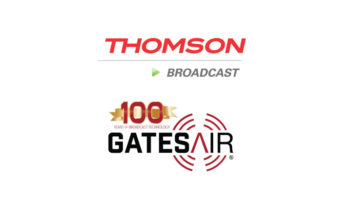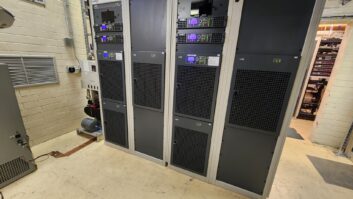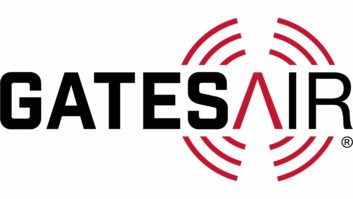SAN ANGELO, TEXAS — As a contract engineer for several broadcasters, I often am involved in planning transmitter facilities from the construction phase through installation and commissioning. For the most part, my services are retained well after the transmitter has gone on the air, handling ongoing maintenance and technical support.

Having intimate involvement across many RF facilities gives me deep insight into the efficiency and performance of various transmitters. For my money, the GatesAir Flexiva is outperforming any transmitter today.
EFFICIENCY
My experience with Flexiva has mostly been in the low- to mid-power range. One of the more recent projects was KMLS(FM), a new build — tower and all — on a leased slice of land. Efficiency was a top demand from the station owners. Given the quick turnaround required, the discussion first centered on a used transmitter rental. My representative at SCMS, my preferred industry supplier, reported that GatesAir was prepared to ship a high-efficiency Flexiva transmitter to the site within one week.
We required a 3.5 kW model to power the FM signal across the allotted coverage area, but wanted a transmitter that would save us on cost over the long haul. The Flexiva FAX3.5 delivers a 72 percent AC-to-RF efficiency ratio, with minimal cooling requirements. This is significant, as anything north of 65 percent is a real game-changer for a full Class A station, and efficiency-minded Class C3s like KMLS. The Flexiva is saving us approximately $300 a month — reducing what was before a $500 monthly electric bill to just over $200.
Where does this efficiency come from? GatesAir utilizes a transmitter design called PowerSmart 3D for their current-generation transmitters. PowerSmart 3D uses 50 V LDMOS transistors to drive amplification, which delivers very high power density inside the transmitter. In addition to affecting energy use, this technology drives down the transmitter footprint — and minimizes parts inside the cabinet. These two design traits deliver an entirely different set of efficiencies tied to installation, operation and maintenance.
First, the compact design benefits can be summed in one point: I was able to drive to the transmitter site with the unit in the front passenger seat. It’s the first time in 30 years I have had a full-power transmitter in my front seat.
Because the transmitter came preconfigured, it was plug-and-play at the site.
That power density is significant not only to size but ongoing operation. The PowerSmart 3D design is fully broadband, which means it’s a frequency agile transmitter driven through a single power amplifier. An owner with multiple stations can easily move this to a new station and change the frequency on the transmitter. Additionally, the use of fewer parts inside makes maintenance a simpler proposition.
The Flexiva shines in several respects in terms of performance. In addition to excellent audio quality— driven through the integrated Flexiva exciter — there are several RF-specific performance benefits that I could detail. However, for the purpose of this story I’ll share a benefit that is rarely discussed: the handling of intermodulation and spurious emission.
We’re required to do emissions testing at this site, and the Flexiva is collocated with a high-power transmitter. The Flexiva’s broadband power amplifier more effectively reduces inner modulation compared to other transmitters. When collocating a lower-power transmitter with a higher-power unit, there is concern that each transmitter will pick up radiation from the other as the signals come down the feedlines from the antennas. That radiation then mixes and creates a new frequency on the output.
Unlike tube transmitters, modern solid-state transmitters don’t have a protective tank circuit between the antenna and the power amplifier. Often, an engineer is forced to buy an expensive filter to solve the problem across collocated solid-state transmitters. The Flexiva design solves the problem of handling intermodulation and spurious emission itself.
This represents the core benefit of the Flexiva: its ability to solve problems, whether lowering power bills, reducing HVAC headaches or addressing intensive RF engineering challenges.
I’d like to close with a point about GatesAir technical support. We recently had a tree fall onto a power line, which initiated a power surge at the transmitter facility. The exciter software shut down the unit to protect itself from damage. As I drove the 100 miles to the site to bring a backup unit to air, I called GatesAir support to explain the problem. Through a live Internet connection to the GUI, the technical support representative reset the exciter before I reached the site. Without any intervention beyond a phone call, the transmitter was back to full performance. That kind of support is extremely attractive in modern engineering.
In summary, to be a good custodian of your capital as an engineer, it’s important to understand and realize the efficiencies that a modern transmitter can deliver. The Flexiva transmitter efficiencies from the AC-to-RF ratio, broadband amplification and built-in redundancies are just a few of these revelations.
For information, contact Keith Adams at GatesAir in Ohio at (513) 459-3447 or visit www.gatesair.com.











